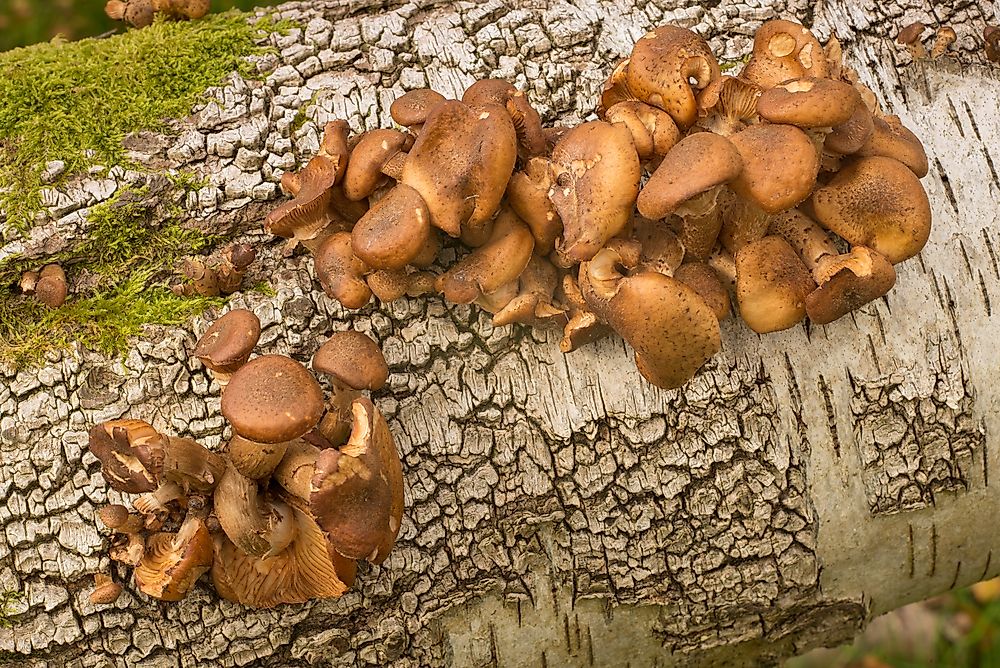What Is Unique About The Armillaria ostoyae?

A photo of the Armillaria ostoyae would not invoke expressions of surprise or amazement. This organism comes off as just another random mushroom. However, the Armillaria ostoyae is not just a regular mushroom but rather one that can grow to immense sizes and survive for centuries. Scientists in 1998 discovered an expansive growth of this Armillaria in Oregon’s Malheur National Forest which forced people to revise their idea of the largest organisms as well as the oldest living organism.
What Is Armillaria ostoyae?
The Armillaria ostoyae is a fungus in the family of the mushrooms. This species of fungi are found all across North America but is quite common in western parts of the US and grows on both hardwood and coniferous wood. Whereas some fungi feed on the dead plant material, there are others that feed on live organisms, and the Armillaria ostoyae is one of these murderous fungi. The vegetative part called the mycelium attacks the outer layers of recently formed wood (sapwood) and can penetrate deep under the bark and even between trees in the form of black ‘shoestring’ structures called rhizomorphs. Armillaria ostoyae is distinguishable from other species of the Armillaria genus. It features different shades of brown and scales on the cap. There is also a prominent, well-developed ring on its stem just below the cap that sets it apart from other Armillaria.
Largest Living Organism
The 1998 discovery of a bloom of Armillaria ostoyae in Oregon’s Blue Mountains set a new record for the world’s largest known living organism. This growth is humongous by all standards occupying a land space of about 2,384 acres in the forest, which is almost 4 square miles. In other words, this fungus would effortlessly cover more than 1,665 football fields. The blue whale is considered the largest living organism with the ability to grow to 110 feet in length and weight 200 tons. The Armillaria ostoyae in Malheur National Forest is at least 2.4 miles across trumping the blue whale by far. Research showed that cells from different individuals within the same colony had the same genetic makeup and would fuse with each other and thus sparking the debate as to whether this is the largest organism or not.
Oldest Living Organism
The current growth rate of the Armillaria ostoyae in Oregon has pushed scientists to estimate its growth to be at least 2,400 years old and as much as 8,650 years old. This fact would earn the Armillaria ostoyae a slot in the Guinness Book of Records as the oldest living organism. Currently, this title is held by what would potentially be prey for the Armillaria ostoyae; a bristlecone pine tree estimated to be as old as 5,067 years in age.
Pathogenicity
Armillaria ostoyae grows by feeding off the roots of trees. It leaches and kills them. Having a vast network of mycelia in the forest gives this organism a shot to thrive. The mycelia permeate below the forest floor where it burrows into the roots of the trees. Once every year, there is the bloom of mushrooms that are produced typically at around the foot of an infected or a recently-dead tree. The actual living organism cannot be seen, but rather people see its ‘fruits.’











